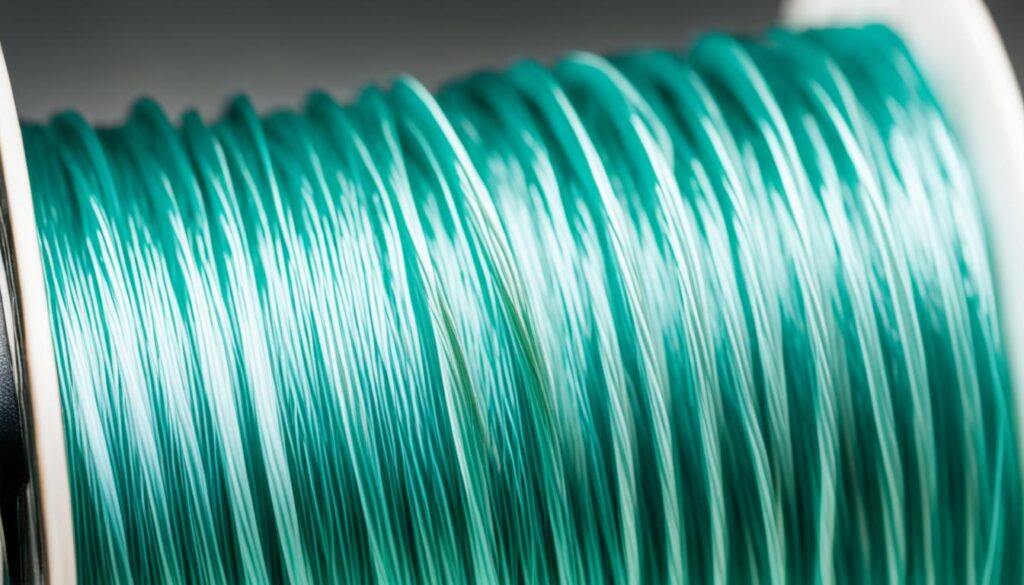Using a monofilament backer is wise when spooling braided line on a spinning reel. The mono backing helps in several ways. It stops the line from slipping on the spool, leading to a straighter line as it goes onto the reel.
It’s best to use 8-10 lb. monofilament for backing. Thicker mono might cause the line to tangle and lead to an uneven line lay. Having 150 yards of braid over the backing is enough for most fishing times. But if you’re fishing for big fish, using a more enormous reel is better.
Angler’s Essentials:
- Using a monofilament backer is recommended when spooling a braided fishing line onto a spinning reel.
- 8-10 lb. monofilament is ideal for backing to prevent line slippage and ensure even line lay.
- Having 150 yards of braid over the backing is usually sufficient for inshore fishing.
- For larger fish, it is recommended to use a more enormous reel.
Using a monofilament backer when spooling a braided line is a smart move. It stops your line from slipping and ensures it lays evenly on your reel. Choose 8-10 lb. monofilament for the best results. This weight gives a good balance of strength and thickness.
It’s crucial to spool your line tightly. This way, it stays in place without slipping. Doing this improves your fishing gear, leading to a fun time out on the water.
Why Use Mono Backing for Braided Line?
Using mono backing with a braided line has many benefits. It stops the line from slipping on the spool. This is because the braided line is both slick and thin. Mono backing, being more grabby, solves this problem.
It’s best to use special electrical or masking tape, not extra sticky tapes that can cause damage. These help the line stay put without the mess.
Add 100-150 yards of mono backing if your reel isn’t full with just the braided line. Most braided lines are in 150-yard spools. Adding mono makes sure your reel is ready to cast farther.
By using mono backing, you keep your line from slipping and make your reel perform better. This method is simple and works well for both freshwater and saltwater fishing. It’s a great way to enhance your fishing experience.
Conclusion
In conclusion, using monofilament backing with a braided fishing line is a great idea. Mono backing offers several key advantages. Firstly, it stops the line from slipping on the spool. This keeps your line tight, ready for those big fish fights.
Secondly, mono backing helps achieve a smooth, even line lay. This leads to better and further casts, which anglers looking to fish over a wide area will find very beneficial.
Lastly, using mono backing lets you fill your reel. Because braided lines come in shorter spools, they may not fill big reels. Adding a bit of mono backing solves this. It increases casting distance, too.
To sum up, adding monofilament backing improves your fishing setup in several ways. It stops line slippage, smooths out your casts, and fills your reel. Next time you’re spooling, consider adding monofilament backing for a better fishing trip.
FAQ
Why should I use a monofilament backer for spooling braided fishing lines?
A monofilament backer has many advantages. It stops the line from slipping on the spool. This makes sure the line is spread out evenly.
It helps to load the reel correctly. So, your reel works as it should.
What pound test of monofilament should I use as backing for spinning reels?
For spinning reels, choose 8-10 lb. monofilament as your backing. Thicker mono can lead to problems like tangled lines.
It ensures your line sits smoothly on the reel.
How much monofilament backing should I have for inshore fishing situations?
For inshore fishing, aim for 150 yards of braid on top of the backing. A more enormous reel might be better for bigger fish.
What type of tape should I use for the monofilament backing?
Electrical tape or masking tape is best for monofilament backing. They stick well and won’t leave a mess when removed.
